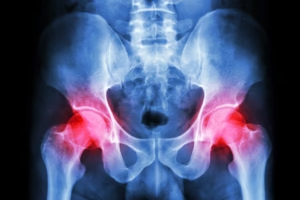The Truth About Shoulder Pain: How to Find Relief Fast
Shoulder pain can take many forms – it can show up when you’re reaching toward the top shelf to put dishes away or when you’re struggling to find a comfortable position to sleep in without feeling a dull aching pain in your shoulder and neck. It can show up as a result of an injury, making you feel as if your shoulder is immobile. There are numerous reasons why someone may experience shoulder pain, and the severity can range from the temporary discomfort of a pulled muscle to the agonizing bone-on-bone friction of arthritis. Whatever the case may be, BeActive Physio is dedicated to offering you natural pain management modalities.
Why do I have shoulder Pain
Your shoulder is capable of accomplishing many physical feats, and has the greatest range of all the joints in your body. However, with its complexities also comes the possibilities of pain and discomfort. It is a “ball-and-socket” joint, meaning the head of the upper arm bone, or “humerus,” fits perfectly in the corresponding space within the shoulder blade, or “scapula.” The ends of the bone are protected by a thick layer of cartilage, protecting the bones from rubbing together. Fluid-filled sacs called “bursae” also protect the tendons from rubbing against the bones. Tendons attach the bones in the shoulder to a set of bones, known as the rotator cuff. If something goes wrong with the intricacies that make up the mechanical interplay of the shoulder, pain can result.
The type of pain you feel in your shoulder can vary, depending on what is causing it. Pain from impingement, for example, typically occurs as you raise your arm up, and begins at a certain point in the range of motion. Pain resulting from a degenerated shoulder may create persistent aches every time you move your arm in certain directions. Acute injuries can result in sudden and intense pains that make it impossible for you to move your shoulder at all.
What is causing my shoulder pain?
The complexities of the shoulder joint presents many opportunities for pain-causing conditions. Some of the most common causes of shoulder pain include:
- Impingement. Impingement typically occurs because of abnormal movement and tracking of the humeral head as you lift your arm overhead. Pain typically occurs when lifting your arm at or above 90 degrees.
- Rotator cuff tear. The rotator cuff is comprised of 4 muscles, tendons, and soft tissue that surround the shoulder joint. The job of the rotator cuff is to correctly guide the movement of the shoulder joint. With injury, overuse, poor posture, or even age, the rotator cuff can be partially or completely torn. Depending on the severity and situation, sometimes surgery is needed, but often the correct physiotherapy treatments can help reduce pain and restore strength to the rotator cuff to compensate for the partial tear. If surgery is needed, physiotherapy is an integral part of the rehabilitation to a full recovery.
- Tendinitis. Tendinitis occurs when the shoulder joint is excessively overused typically due to the demands of a laborious job, overhead activity, or sport. Furthermore, poor posture is a major contributor, as this alters the normal forces on the tendons, and can set you up for tendon injury. This causes the tendons to undergo ongoing inflammation, resulting in swelling and painful impingement when raising your arm.
- Frozen shoulder. Also known as “adhesive capsulitis,” frozen shoulder can occur if your arm has been in a case or sling for a while, or if you have been bedridden for an extended period of time. Furthermore, there are some ethnicities that are more predisposed, and women tend to have more instances than men. It is more common in women in the 40-60 years of age. Frozen shoulder results in a painful loss of motion in the shoulder with a tightening of the shoulder joint that severely limits motion.
- Arthritis. The two main forms of arthritis that affect the shoulder are osteoarthritis and rheumatoid arthritis. Osteoarthritis occurs when the cartilage in the shoulder joint experiences significant “wear and tear,” typically due to age or excessive overuse. Rheumatoid arthritis occurs when the immune system decides to attack the membranes surrounding the shoulder joint, resulting in pain and inflammation. Both of these result in a painful loss of motion, weakness to the shoulder muscles, and difficulty performing normal, daily tasks.
Find relief through physiotherapy:
Physiotherapy is a natural, easy, and comfortable way to find relief for shoulder pain, without the need for harmful drugs or invasive surgery. Our Oakville, ON physiotherapists have treated a number of conditions resulting in shoulder pain, with patients finding improvement and relief after just a few short sessions - and sometimes less!
Our physiotherapists are skilled in understanding movement and are trained to identify the underlying sources of your discomfort using a range of evaluation methods. During your evaluation, we will examine your range of motion, strength, coordination, medical history, joint mobility, and mechanics of your joint motion.
After identifying the source of your shoulder discomfort, we will design a tailored blend of physiotherapy techniques aimed at managing and alleviating your pain. Gentle manual therapy helps to restore normal joint movement, ease soft tissue restrictions, and promote circulation, while specific therapeutic exercises restore strength, and the correct sequence of muscle activation around the shoulder joint. Finally, we teach you techniques to enhance your strength and to prevent recurrence of future shoulder problems.
Don’t let your shoulder pain limit your physical abilities any longer! Our Oakville, ON physiotherapy practice will get you the help you need to start living your normal life once again. Reach out to BeActive Physio at our Oakville, ON Center today to enhance your comfort and manage your injuries, and discover a more fulfilling lifestyle through our dedicated physiotherapy services.
FAQs
01. What is the most common shoulder injury?
Sprains and strains are among the most commonly experienced overuse injuries in the shoulder area. A strain occurs when a muscle or tendon is stretched too far or torn. A sprain occurs when a ligament is stretched too far or torn. Strains and sprains can result in an ongoing shoulder pain that may make it difficult to partake in exercise or even daily tasks. For minor strains or sprains, applying ice at home and allowing time for rest can often lead to a smoother recovery process. More severe strains and sprains will often require physical therapy treatments. Additional shoulder injuries include a torn cartilage, dislocation, tendinitis, frozen shoulder, and arthritis.
02. How do you know if my shoulder injury is serious?
Your shoulders can accomplish several physical feats due to their structure – however, this also means that they are susceptible to an increased risk of injury because of their complexity. If something becomes damaged in the make-up of the shoulders, pain and discomfort can develop. This pain may range from a dull ache to shooting pains, depending on the severity of the condition. If you are experiencing severe pain, or pain lasting three months or longer, it could be indicative of a deeper issue.
03. How do I get my shoulder to stop hurting?
When shoulder discomfort arises, engaging in physical therapy can be an effective pathway to finding relief. Our physical therapists are highly trained to help improve the flexibility and range of motion in your shoulder, in addition to relieving your pain and discomfort. This will be done through an individualized treatment plan designed specifically for you, and may include any combination of treatment methods as your physical therapist deems fit, including manual therapy, ice and heat therapies, electrical nerve stimulation, or ultrasound. Your physical therapist will also prescribe targeted exercises and stretches to help regain your optimal shoulder function.
04. How can physical therapy help with shoulder pain?
Two of the biggest goals of physical therapy are 1) to alleviate your pain and 2) to improve your function. Your physical therapist will work with you to make sure that both of these are achieved throughout your physical therapy sessions. Physical therapy effectively manages discomfort associated with various conditions, and in numerous instances, it can significantly alleviate shoulder pain, reducing the reliance on medications or surgical procedures.
Quick Links
Recent Posts

How Massage Therapy Helps Runners Thrive: Stress Relief and Performance Boost

Physiotherapy for Vertigo Management: Effective Strategies for Symptom Reduction


